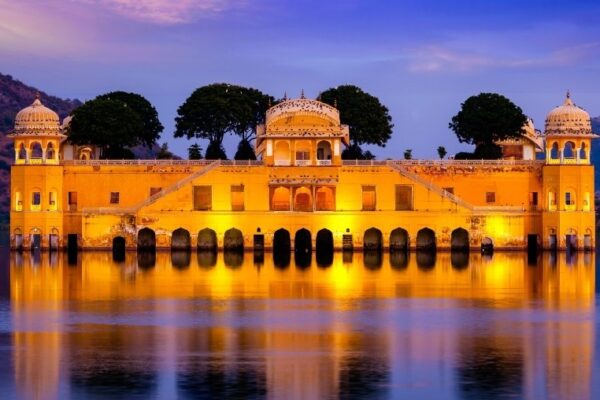Welcome to Jaipur, a city where the past and present coalesce in an architectural tapestry that is as vibrant as the city itself. With its grandiose forts, opulent palaces, and remarkable astronomical observatories, Jaipur stands as a testament to the rich cultural and architectural heritage shaped by Rajput and Mughal influences. As we journey through the Pink City, let’s unravel the stories etched in stone and mortar, exploring the architectural marvels that make Jaipur a celebrated UNESCO World Heritage City.
Forts and Palaces: The Grandeur of Rajput Architecture
Amber Fort
Perched atop a hill, Amber Fort is a majestic blend of Hindu and Mughal architectural styles. The fort’s sprawling complex, with its stunning Sheesh Mahal (Mirror Palace), magnificent courtyards, and serene Maota Lake, offers a glimpse into the royal lifestyle of the Rajputs. Don’t miss the evening light and sound show that brings the fort’s history to life.
City Palace
At the heart of Jaipur lies the City Palace, a magnificent complex of courtyards, gardens, and buildings with intricate architectural details. The palace houses a museum that showcases royal garments, weapons, and artifacts, providing insights into Jaipur’s regal heritage. The four gates representing the seasons in the Pritam Niwas Chowk are a must-see for their exquisite craftsmanship.
Hawa Mahal
Known as the Palace of Winds, Hawa Mahal is an architectural marvel with its unique façade featuring 953 small windows (jharokhas). Designed for royal ladies to observe street festivals while remaining unseen, this five-story structure offers breathtaking views of the city and a peek into the ingenious design that allowed cool breezes to flow through, keeping the palace interior comfortable even in the scorching heat.
Astronomical Marvels: Jaipur’s Celestial Legacy
Jantar Mantar
A UNESCO World Heritage Site, Jantar Mantar is an astronomical observatory built by Maharaja Sawai Jai Singh II. It houses the world’s largest stone sundial, the Samrat Yantra, among other architectural-astronomical instruments. These structures, designed for observing celestial bodies, highlight the advanced scientific knowledge and architectural genius of their time.
Lesser-Known Gems: Hidden Architectural Treasures
Jal Mahal
Floating in the middle of Man Sagar Lake, Jal Mahal is a serene palace offering a stunning spectacle, especially at night when it’s illuminated. While entry to the palace is restricted, the view from the shore is enough to captivate any visitor’s imagination.
Sisodia Rani Garden
A little away from the city’s hustle, Sisodia Rani Garden is a peaceful retreat with beautiful gardens, fountains, pavilions, and murals depicting scenes from Radha-Krishna’s love story. This garden palace reflects the harmony between Mughal and Indian architectural styles and offers a tranquil escape into nature’s lap.
Conclusion: Embracing the Architectural Majesty of Jaipur
Jaipur’s architectural landscape is a splendid mosaic of history, culture, and artistry. From the grand forts and palaces narrating tales of royal opulence to the astronomical observatories that speak of a rich scientific heritage, Jaipur invites you to traverse through time and marvel at its enduring beauty. Beyond the well-trodden paths lie hidden gems waiting to be discovered, each offering a unique perspective on the city’s architectural grandeur. So, as you wander through the Pink City, let the stones and structures around you whisper stories of a glorious past, enriching your journey with a deeper appreciation of Jaipur’s architectural wonders.




